The Toshiba Q300 SSD Review: Toshiba Becomes a Retail Brand
by Billy Tallis on February 26, 2016 8:00 AM ESTRandom Read Performance
The random read test requests 4kB blocks and tests queue depths ranging from 1 to 32. The queue depth is doubled every three minutes, for a total test duration of 18 minutes. The test spans the entire drive, which is filled before the test starts. The primary score we report is an average of performances at queue depths 1, 2 and 4, as client usage typically consists mostly of low queue depth operations.
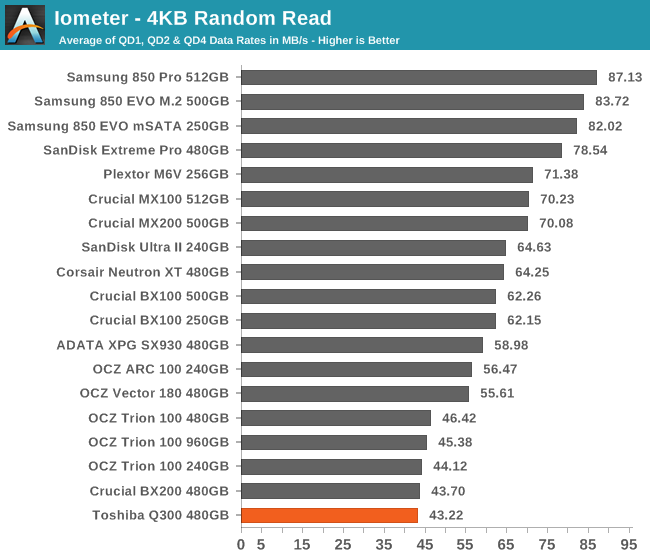
The Q300 performs only slightly worse than the Trion 100, but the difference is enough to push it below even the Crucial BX200 and into last place by a hair. The top-performing SATA drive by comparison, Samsung's 850 Pro, is twice as fast. The SanDisk Ultra II performs more like a MLC drive.
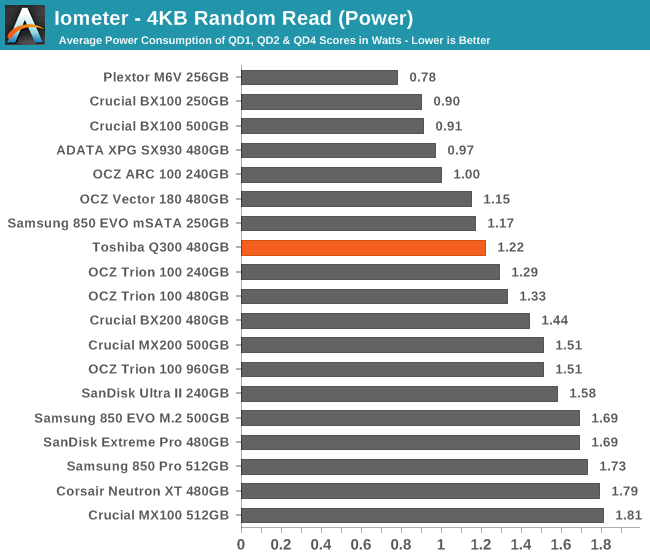
The Q300's power consumption isn't poor, but like most of the other TLC drives it's much less efficient than the typical MLC drive - let alone the SM2246EN-based BX100 and M6V.
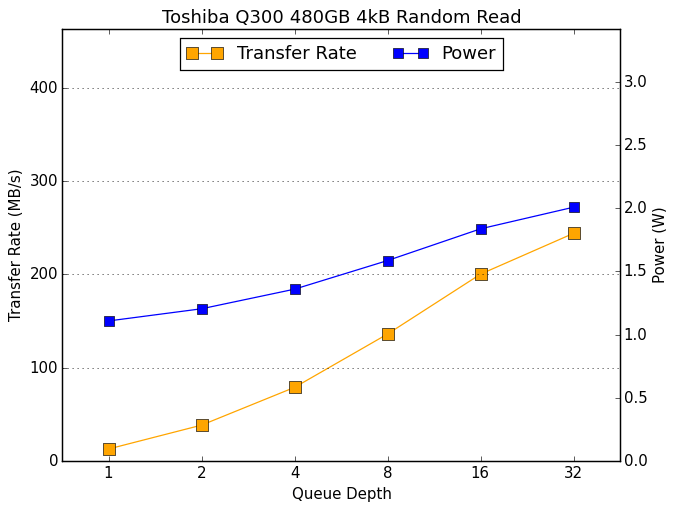 |
|||||||||
The Q300's random read performance scales with queue depth in a normal-looking manner, but the curve just isn't steep enough to compete.
Random Write Performance
The random write test writes 4kB blocks and tests queue depths ranging from 1 to 32. The queue depth is doubled every three minutes, for a total test duration of 18 minutes. The test is limited to a 16GB portion of the drive, and the drive is empty save for the 16GB test file. The primary score we report is an average of performances at queue depths 1, 2 and 4, as client usage typically consists mostly of low queue depth operations.

As with the random read test, the Q300, Trion 100, and BX200 are clustered at the bottom of the chart, demonstrating the they are not very good at mitigating the slower program times of TLC as compared to MLC flash. The SanDisk Ultra II seems to have much more effective SLC caching.
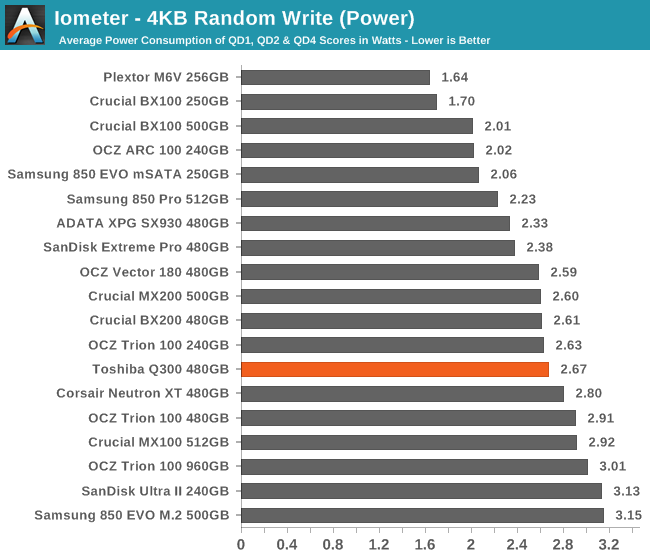
The Q300 was clearly a bit more efficient than the Trion 100 for random writes, but it doesn't put it anywhere near the efficiency of the drives that deliver solid performance.
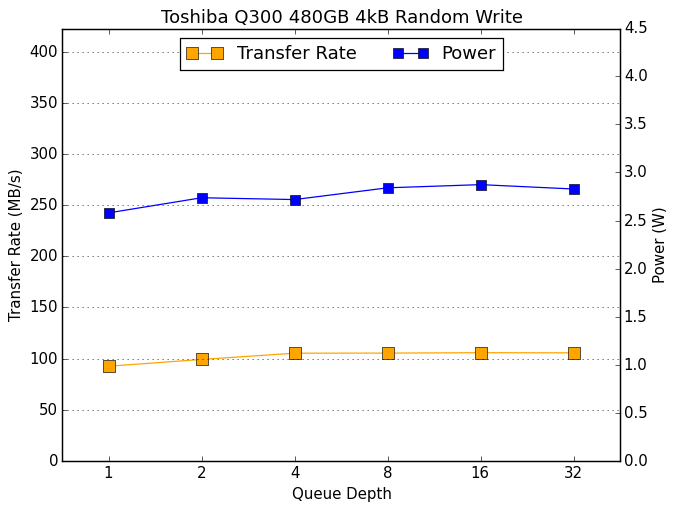 |
|||||||||
The Q300's random write performance scales very slightly as queue depth increases from one to four, and it stops there. The power consumption is lower than the Trion 100 at QD2 and higher. We've also seen this lack of scaling with the Crucial BX200, but the SanDisk Ultra II managed to use planar TLC flash without being similarly afflicted.










30 Comments
View All Comments
bill.rookard - Friday, February 26, 2016 - link
MX100's are awesome drives, I have a pair in my webserver with a M4 for the boot drive. Sadly, the whole issue appears to be (with the exception of Samsungs drives) the TLC. When having to account for the 8 different voltage states required for 3 bit per cell it seems that the controllers are not up to the task of getting things done quickly.I'm thinking widespread adoption of V-nand (regardless of manufacturer) along with MLC in a larger lithography will wind up being the perfect storm of capacity, price, speed and endurance.
Arnulf - Friday, February 26, 2016 - link
TLC cells have 8 distinct voltage levels per cell to make up for 3 bits of information, not 3.hojnikb - Friday, February 26, 2016 - link
thats what he said.kmmatney - Friday, February 26, 2016 - link
No, he said 3, not 3vladx - Friday, February 26, 2016 - link
"No, he said 3, not 3"Huh?
boozed - Friday, February 26, 2016 - link
It's really quite simple. He said 3, not 3.extide - Friday, February 26, 2016 - link
I think what we will see is 3D TLC in pretty much all mainstream stuff, and 3D MLC in the high performance stuff.Samus - Friday, February 26, 2016 - link
It's too bad the MX100 and BX100 are harder and harder to find, when the MX200 and ESPECIALLY the BX200 are inferior.leexgx - Friday, February 26, 2016 - link
the BX100 its perfect for laptops as its super power efficient, the MX100/BX100 is the most use the most power SSD (the Adata Sp550 also uses the BX200 controller)leexgx - Friday, February 26, 2016 - link
ops!! MX200/B200 or any SSD that uses TLC with SLC cache seem to be extremely high power usage, for minimal overall speed boost (and higher chance of data loss due to SLC/TLC data movement)